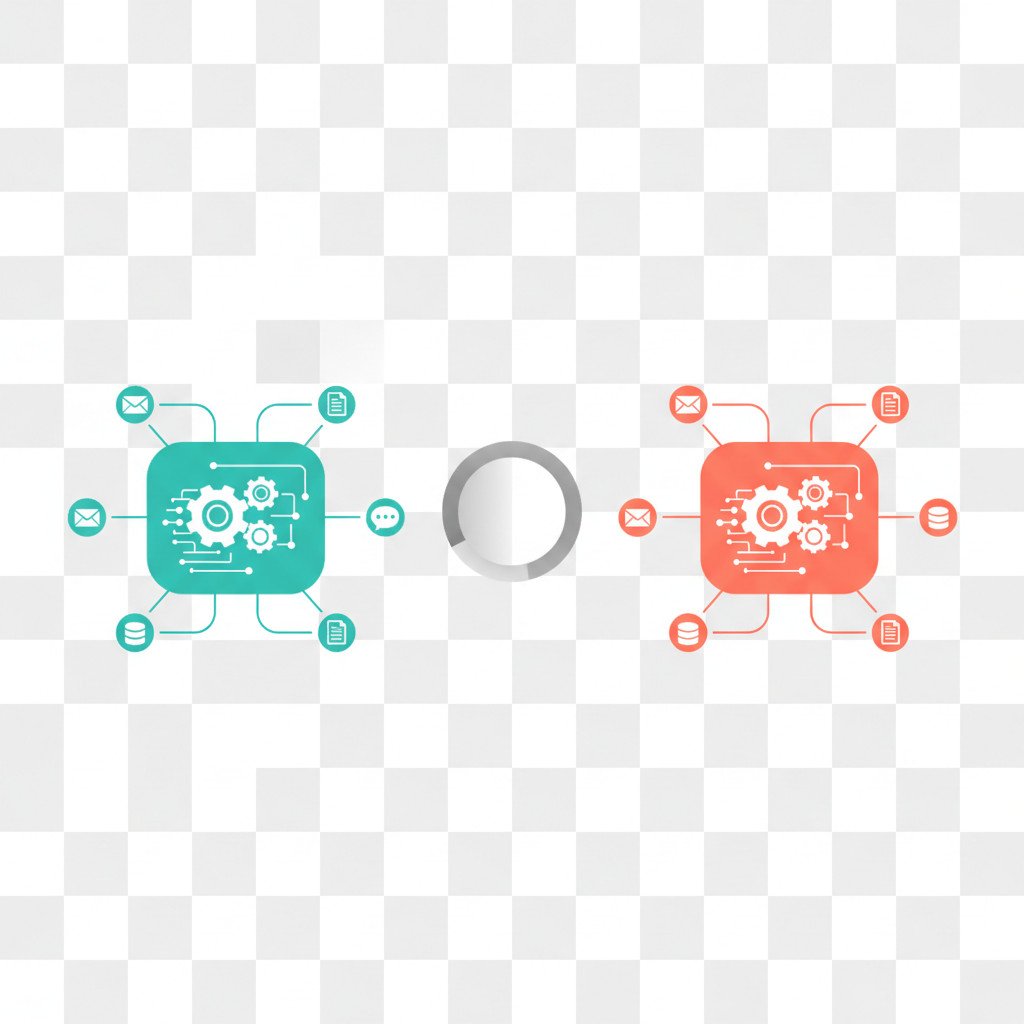Zapier vs Gumloop
Zapier vs Gumloop is a decision many teams face as they design AI-first workflows. Choosing the right automation platform shapes productivity, security, and long-term cost. In this guide, we compare integrations, AI capabilities, pricing, and enterprise readiness.
Zapier offers a vast catalog and proven uptime, while Gumloop focuses on AI-first nodes. Therefore, organizations must weigh scale against specialized AI features and developer flexibility. We look at real metrics, like task volume, app connectors, and compliance.
For example, Zapier connects with thousands of apps and reports high uptime. By contrast, Gumloop launched in 2023 and centers on built-in AI actions. However, Gumloop can handle complex image and video analysis through AI nodes.
This article guides technical leads and no-code builders through practical tradeoffs. You will get recommendations based on scale, security, and AI automation needs. Finally, we provide scenarios to help you pick the best platform. Read on to compare use cases, pricing models, and deployment options.
Zapier vs Gumloop Overview: Which Platform Fits Your AI Workflows?
Zapier vs Gumloop sits at the center of modern workflow automation choices. This automation tools comparison highlights core strengths and tradeoffs. Zapier targets broad enterprise automation with a huge app ecosystem. Gumloop focuses on AI-first workflows and built-in AI nodes. Therefore, teams must match needs to platform strengths.
Zapier connects with over 8,000 apps and offers mature enterprise controls. As a result, it excels at scale, reliability, and predictable pricing. Zapier also includes Copilot and a large catalog of prebuilt templates.
Gumloop launched in 2023 and provides 100 plus connected apps. However, its core appeal lies in AI-powered nodes that extract and analyze data. This makes Gumloop strong for image, video, and LLM-driven automations.
In summary, this workflow automation comparison shows Zapier for proven scale. Conversely, choose Gumloop when you need specialized AI actions and flexibility. Below we dive into integrations, pricing models, security, and real use cases.
For technical teams, Gumloop rewards deep configuration. Meanwhile, no-code teams benefit from Zapier Copilot and prebuilt templates. Moreover, security-conscious enterprises will prefer Zapier’s longstanding compliance and uptime track record.

Zapier Features and Usability
Zapier combines a broad app catalog with a clean, no-code interface that speeds automation work. It connects with over 8,000 apps, making it one of the largest integration platforms. For details on connectors and features see Zapier features. Because of its scale, Zapier supports many common enterprise workflows out of the box.
The editor uses a visual, stepwise flow. As a result, builders map triggers and actions without code. Zapier Copilot further simplifies creation by generating automations from plain language. Moreover, prebuilt templates and a large public library reduce setup time for common tasks. Teams also use Code by Zapier when they need custom logic.
Zapier emphasizes reliability and enterprise controls. It offers SOC 2 and GDPR compliance, audit logging, and a unified admin hub. Therefore, security teams can enforce SSO and granular permissions. Zapier reports 99.99% uptime, which helps mission critical workflows stay online.
Users cite clear benefits: improved workflow efficiency, faster lead routing, and fewer manual handoffs. Additionally, Zapier supports multi-step automation, conditional logic, and error handling. Because pricing is task-based, organizations can predict bills as usage grows. For a pricing overview, visit Zapier pricing.
In short, Zapier features deliver approachable automation for both no-code and technical teams. Consequently, it remains popular across startups and large enterprises. If you value a huge app ecosystem and proven stability, Zapier often leads the integration platforms category.
Built for teams, Zapier scales from one-person shops to global operations. And it offers monitoring, retries, and detailed logs to improve reliability and debug flows.
| Criterion | Zapier | Gumloop |
|---|---|---|
| Pricing | Task-based, predictable pricing. Transparent tiers for teams and enterprises. Good for forecasting costs. | Credit-based model. Basic tasks cost 1 credit; complex actions 2–60 credits. Solo plan example: 10,000 credits. Costs can vary with heavy AI usage. |
| Key Features | 8,000+ app connectors. Zapier Copilot, Agents, Canvas, Tables, Interfaces, Code by Zapier. Prebuilt templates and automation library. | AI-first nodes for data extraction, image and video analysis, and LLM orchestration. Niche integrations and custom connectors. |
| Ease of Use | No-code visual editor. Copilot builds automations from plain language. Low learning curve for nontechnical teams. | More technical. Steeper learning curve. Powerful for engineers and AI builders. |
| Integrations | Vast ecosystem including 400+ AI tools. Strong support for mainstream business apps. | 100+ native apps plus custom integrations. Focus on AI toolchains. |
| Customer Support | Enterprise support, documentation, and active community. Proven for large customers. | Growing support and enterprise features. Smaller community and fewer public templates. |
| Ideal Use Cases | Enterprise-scale workflow automation. No-code teams, CRMs, marketing, support routing. | AI-heavy pipelines, computer vision, LLM orchestration, custom AI workflows. |

Gumloop Features and Benefits
Gumloop focuses on AI-first automation and offers distinct advantages for data heavy workflows. As a result, Gumloop benefits teams that need built-in AI nodes and flexible orchestration. Founded in 2023, the platform prioritizes advanced model integration and media analysis.
Key features include
- AI powered nodes for data extraction and LLM orchestration.
- Image and video analysis nodes for computer vision tasks.
- Credit based pricing that credits tasks differently by complexity.
- Custom connectors for niche integrations and private APIs.
- Enterprise controls including access management and audit logs.
Usability trends show Gumloop appeals to technical teams. Engineers and ML builders gain deep control over pipelines. However, the platform has a steeper learning curve than no-code tools. Therefore, teams should plan onboarding and documentation time. Using Gumloop rewards those who need granular AI configuration.
Gumloop improves workflow efficiency for AI centric projects. For example, it automates data labeling, extracts metadata from media, and orchestrates LLM prompts at scale. Because built-in AI nodes handle heavy compute tasks, teams save integration work. Additionally, Gumloop supports complex branching and custom logic for research and production workflows.
Tradeoffs matter. Gumloop lists about 100 native app connectors, which is far fewer than larger ecosystems. Consequently, teams that need broad app coverage may build custom integrations. Moreover, credit pricing can vary with heavy AI usage, so budgeting needs careful monitoring.
Choose Gumloop when you require specialized AI automation tools and tight model control. Conversely, pick another platform if you prioritize massive app ecosystems or a low touch no-code experience. Overall, Gumloop benefits technical buyers who value AI first workflow efficiency and flexibility.
Use Cases and User Experience
Zapier vs Gumloop maps to different real world needs and skill sets. Zapier serves fast, cross functional automation for business teams. For example, marketing teams automate lead routing, sync CRMs, and update spreadsheets. Meanwhile, support teams route tickets and create notifications. As a result, no-code builders benefit from quick wins and fewer handoffs.
Gumloop targets AI heavy workflows and technical builders. Teams use Gumloop for image and video analysis, data labeling, and LLM orchestration. Because it includes AI powered nodes, Gumloop reduces integration work for model driven pipelines. However, it requires more onboarding and developer time. Therefore, research teams and ML engineers get the most value.
On user experience, Zapier emphasizes simplicity and discoverability. It offers templates, a visual editor, and Copilot to create automations quickly. For details on connectors and features, see Zapier features. Consequently, small teams and nontechnical users can automate routine tasks fast. Additionally, enterprises gain predictability through task based pricing and mature admin controls.
By contrast, Gumloop trades simplicity for granular control. It supports branching logic and custom connectors for complex AI flows. Moreover, credit based pricing favors flexible compute allocation, but budgets need close monitoring. In practice, media companies, AI startups, and R&D groups prefer Gumloop for model orchestration.
Choose Zapier when you need broad app coverage, low friction, and enterprise grade reliability. Choose Gumloop when you require deep AI functionality and developer level control. Ultimately, pick the tool that matches your team skills and workflow efficiency goals.
Conclusion
After comparing Zapier vs Gumloop, the decision comes down to scale versus AI specialization. Zapier wins on app coverage, enterprise maturity, and predictable task based pricing. Conversely, Gumloop shines for AI automation tools, built in nodes, and LLM orchestration. Therefore, teams should weigh integrations, usability, and cost models against their technical skills and AI needs.
For most business teams, Zapier delivers faster wins and broad workflow efficiency. It reduces manual steps with templates, Copilot, and thousands of connectors. However, if your work requires media analysis, custom model orchestration, or deep AI pipelines, Gumloop offers powerful primitives. As a result, ML engineers, AI startups, and media teams may prefer Gumloop despite its steeper learning curve.
EMP0 helps bridge these choices with practical automation and AI services. We build ready made integrations and proprietary tools that match enterprise needs. Moreover, we consult on architecture and cost optimization for both Zapier and Gumloop workflows. For more resources and case studies, visit emp0.com and the EMP0 blog at articles.emp0.com. You can also follow EMP0 on Twitter/X at @Emp0_com and find creator integrations at n8n.io/creators/jay-emp0.
In short, choose the platform that matches your team skills, budget, and AI ambitions. If you need guidance, EMP0 offers implementation support and turnkey automations. Get started by auditing your current flows, then pilot the platform that best fits your roadmap.

